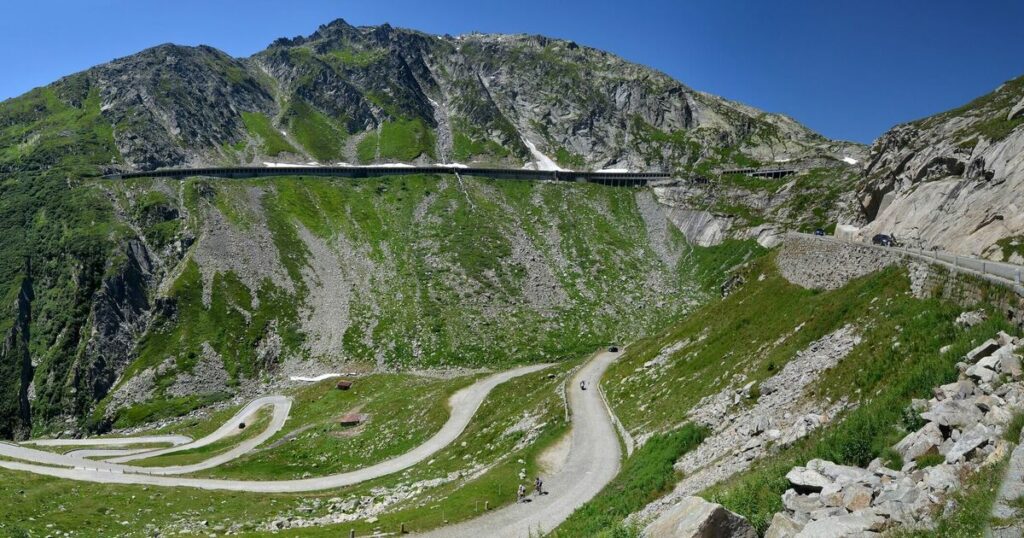Millions of cubic meters of rock were excavated using massive tunnel-boring machines, nicknamed “giant moles,” which carved a direct route for high-speed trains between Zurich and Milan.
With passenger trains reaching speeds of 250km/h (155mp/h), travel time between the two cities has been reduced by an hour, now taking just two hours and 40 minutes.
Dubbed the “building project of the century,” the Gotthard Base Tunnel surpasses Japan’s Seikan Tunnel in both length and depth.
Its straight, flat course minimises elevation changes and eliminates tight bends, making it a highly efficient corridor for rail transport.
The tunnel is not only a record-breaking achievement but also a testament to decades of planning, the concept dates back to the 1960s, and the project took nearly 20 years to complete.
Today, approximately 260 freight trains pass through the tunnel daily, making it a cornerstone of Switzerland’s economy and a vital link between the North Sea and the Mediterranean.
By shifting freight transport from road to rail, the tunnel has significantly reduced exhaust emissions, contributing to cleaner air and the preservation of the Alpine environment.
Swiss officials have emphasised that environmental considerations were at the forefront throughout the project.
The tunnel has made freight and passenger rail more competitive, cutting reliance on road transport and bolstering Switzerland’s commitment to sustainability.
Source link : http://www.bing.com/news/apiclick.aspx?ref=FexRss&aid=&tid=67afb1d5b2254d108737802ff31d51f4&url=https%3A%2F%2Fwww.express.co.uk%2Fnews%2Fworld%2F2010085%2Feurope-deepest-tunnel-Gotthard-Base-Tunnel&c=14011228090052700989&mkt=en-us
Author :
Publish date : 2025-02-07 19:01:00
Copyright for syndicated content belongs to the linked Source.
